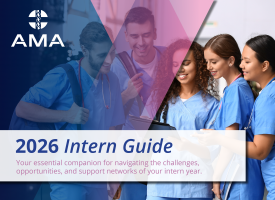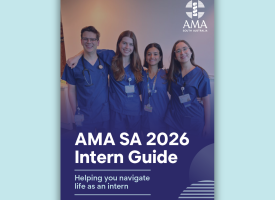AMA report projects "staggering” GP shortage
A detailed new report from the AMA projects a staggering shortage of 10,600 GPs by 2031.

A detailed new report from the AMA projects a staggering shortage of 10,600 GPs by 2031.
The report: The general practice workforce: why the neglect must end, examines the latest literature and publicly available data to analyse the scale and causes of the GP workforce shortfall; and proposes solutions, as part of the AMA’s Plan to Modernise Medicare campaign.
Among the report’s findings:
- Australia is facing a shortage of more than 10,600 GPs by 2031–32, with the supply of GPs not keeping pace with growing community demand.
- In the decade to 2019 demand for doctors’ services increased by 58 per cent, that’s equivalent to the workload of 10,200 full time GPs.
- In the 5 years to 2021, only the equivalent of 4,200 full time GPs were added to the workforce.
- On average both male and female GPs have been trending towards fewer hours per worker. The combined effect has been a lowering of average hours worked across the GP workforce.
- Study after study shows the most cost-effective method, with the best outcomes for patients, is GP-led primary care.
AMA President Professor Steve Robson said the GP shortfall projections were “unimaginable” and all the evidence showed the pressures on GPs would not ease up.
“It should come as no surprise that we’re failing to fill all our available GP training places each year given the impact of the extended freeze on Medicare rebates for GP services, cuts to prevocational GP training places and the abject failure of governments to deliver the support general practice needs to deal with the increasingly complex health care needs of the community.
“We simply should not be in this position, but it’s clear the short-sighted policies of successive Commonwealth governments have failed the community.
“The Commonwealth has talked about the value of general practice but has not backed this rhetoric with concrete action. Instead, we are seeing knee jerk reactions, including from state governments, that undermine the role of a patient’s usual GP, fragment care and do nothing to address the systemic issues we have.
“We need long-term solutions to improve access to GP led care for patients, including in rural and remote areas that have been hardest hit by workforce shortages. Right now, we need all levels of government to work together with the health sector to resolve the GP workforce issues. These state-based quick fixes are not the answer,” Professor Robson said.
For more information visit: https://www.ama.com.au/articles/general-practitioner-workforce-why-neglect-must-end
Read the report: https://www.ama.com.au/sites/default/files/2022-11/AMA-Research-and-Reform-General-practitioner-workforce-why-the-neglect-must-end-final_1_1.pdf



